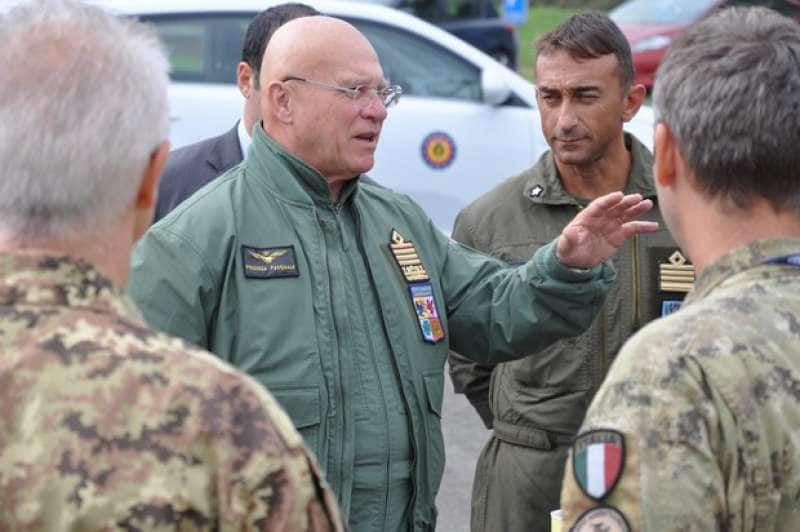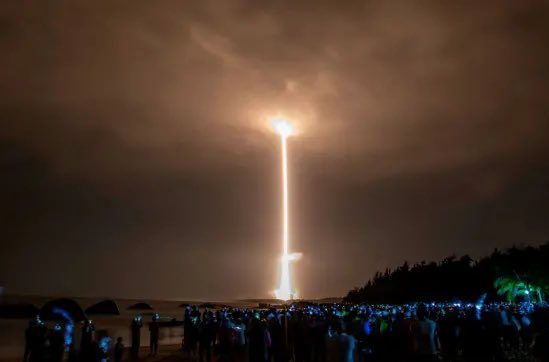(by Andrea Pinto) The Pentagon is concentrating a large part of the resources allocated to Defense to the development of hypersonic weapons to maintain and strengthen leadership in the new global strategic sector. The main goal is to counter China e Russia which, very quickly, are acquiring new skills to develop their own versions. The day before yesterday, the US Department of Defense announced that one of the hypersonic missile launch tests failed. The rocket used to accelerate the missile to hypersonic speed broke thus preventing it from test the hypersonic planing body, which is the component needed to develop a hypersonic weapon. Officials initiated a review of the test, which took place at the Pacific Spaceport Complex by Kodiakin Alaska, to understand the cause of the fault.
La Marina andArmy of the United States, however, then carried out "with success”Three more tests on prototype components of hypersonic weapons. The Sandia National Laboratory conducted operations from the launch base of the NASA in Wallops, Virginia. The tests, explains the Pentagon, "will instruct the development of the Navy's Conventional Immediate Strike program and the Army's Long-Range Hypersonic Weapon program". The test, added the Pentagon, resulted in the launch of three precision missiles containing experimental hypersonic elements and "offered demonstrations of advanced hypersonic technologies, capabilities and prototypes in a realistic operating environment".
"This test is a crucial step in the development of a common hypersonic missile, designed by the Navy, consisting of a common hypersonic gliding body and a propeller, which will be fielded by both the army and the navy with individual weapon systems and launch platforms designed for launch from sea or land“, Explains the note from the US Defense, which announces a flight test of the hypersonic missile within the current year.
The Pentagon's announcement comes a few days after the reports, released by the Financial Times, of a hypersonic missile test carried out by China. The vector would have completed the turn of the Earth's orbit without being intercepted.
Hypersonic missiles, like traditional ballistic missiles, can fly at five times the speed of sound but are more maneuverable and can be launched at lower trajectories which make them more difficult to identify.
China today holds together with the US the primacy in the design of new nuclear weapons carried by hypersonic missiles. Last August a rocket brought a bomb to low altitude that circumnavigated the earth, escaping the interception systems. This is the Chinese hypersonic missile, Long March
Il Chinese missile “Long March”, carried by the planing aircraft, traveled the entire planet in low orbit before reaching the point established for the impact, missing by only 24 miles. A test not made public to the international community and which has alarmed the Western powers. According to the nuclear weapons expert, Taylor fravel, this means allows China to easily evade the American missile protection systems used to destroy intercontinental ballistic missiles, until yesterday a boast of military technology in the stars and stripes.
General Preziosa's analysis of Hypersonic, Space and Cyber
Hypersonic is a great game changer in the new international (dis) order, the effects of which will soon manifest in the three traditional military domains with major changes in military planning, doctrinal and tactical planning for the US, China and Russia. Unfortunately, Europe remains on the sidelines.
After the fall of the Berlin Wall, the high technology linked to the US anti-missile system represented the "tipping point" for the balance of power between the great world powers, effectively reducing the nuclear deterrence capabilities of the adversaries. The development in recent years of the new hypersonic technology, capable of evading the US anti-missile capability (there is no anti-missile system capable of intercepting a hypersonic missile), is accelerating the times of global geostrategic change in favor of the great powers that already have developed and matured the new technology. All fixed and mobile military sites, on land and at sea, equipped with important defense systems and considered effective until the advent of the new technology, are today to be considered vulnerable to hypersonic weapons.

Defense capabilities from hypersonic weapons have not yet been developed and this confers supremacy only to countries in possession of such weapons. With the use of hypersonic means and armaments it is possible to travel enormous spaces in very short times: a speed Mach 10 is equivalent to 12.250 kilometers per hour; the distance between Rome and Moscow in about eleven minutes. Such speeds were previously unimaginable in the atmosphere due to the absence of specific materials resistant to high temperatures and aircraft engines "air breathing”Capable of generating thrust beyond Mach 5. La dominance technology in the field of hypersonic has been declared by the Russians and the Chinese, while the US is now in the phase of recovering the manifest technological gap, which has weakened the second strategic offset American based above all on the sophisticated anti-missile system that had characterized the great Western deterrence of the last decades.
The United States had already launched studies for the third in 2014 strategic offset, but China and Russia were faster in reaching technological maturity in the specific sector. President Putin has already claimed that Russia holds the leadership in the hypersonic field by presenting the new arsenal based on the hypersonic missile Zircon (Mach 9, or up to a thousand kilometers per hour) and the strategic system Avangard (over Mach 20). He also stated that he already possesses contrast media for hypersonic weapons.
Russia was keen to reiterate that it has achieved very high levels of national security, never achieved before. China has already carried out tests on hypersonic aircraft in the Gobi desert and has completed the tests for the Jiageng 1 aircraft, developed by Xiamen university after ten years of studies and designs.
The speeds associated with hypersonic will now characterize the development of new weapon systems to counter the new threat, the foreseeable short reaction times will most likely require extensive use of artificial intelligence, machine learning e cloud. The hypersonic, therefore, is fully involving the two new military domains, that is space e cyber, with increased levels of complexity that require more tolerance for risk taking. On the combination cyber-war, space war e hypersonic abilities the new strategic deterrence and the next levels of conflict in symmetrical contexts will be based, where countries with resilient satellite observation capabilities in Leo orbit and who know how to develop the best algorithms in the cyber field to make the most of hypersonic capabilities will prevail.
Not only hypersonic, but also "competition for domination in space"
The American intelligence community in Global Risk Assessment Report also warns his government about Chinese enterprise in developing new military space programs capable of targeting US and allied satellites. The report, drawn up by the Office of the National Director of Intelligence, highlights that the Chinese Defense would be seriously considering, at a strategic level, to undermine theAmerican hegemony in the space environment to pursue military, economic and international prestige advantages. Space operations will therefore be an integral part of the upcoming military campaigns of the Beijing army. The report also mentions some points that highlight Russia's non-negligible space capabilities, even if on the whole it defines China as the “main threat” for the technological competitiveness of the United States. Last April, during the congressional hearing of the Intelligence Services Committee, clarifications were requested on the recent Chinese initiative to send 138 commercial Earth observation satellites into space. The director of the ODNI Avril haines he said there that those 138 satellites are part of China's challenge to American domination in space. The intelligence community also revealed that China will have an operational space station in low Earth orbit between 2022 and 2024 and will continue to conduct exploratory missions to the Moon aimed at establishing a robotic research station and subsequently an "alternate manned" base. The report also highlights the growing development and the proliferation of weapons for use in space. Reportedly, in 2019, the Chinese strategic support force began training with direct ascension anti-satellite missiles, or ASATs, capable of targeting satellites in low Earth orbit. The report said Beijing has already deployed ground-based anti-satellite missiles intended to destroy satellites in low Earth orbit, as well as ground-based anti-satellite lasers, "likely intended to blind or damage sensitive space-based optical sensors." According to the report, in summary, Russia and China are proceeding without delay to train their military space units, and both are deploying new destructive and non-destructive anti-satellite weapons. Russia's weapons include cyberspace disruption capabilities, direct-energy weapons with in-orbit capabilities, and ground-based ASAT capabilities. The report predicts that Russia, with its vast network of reconnaissance, communications and navigation satellites, "will always remain a first-rate space competitor."
